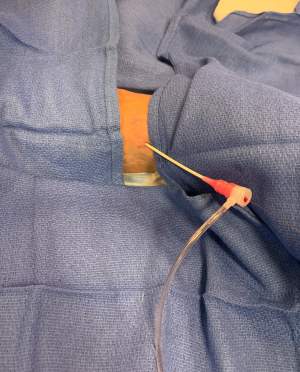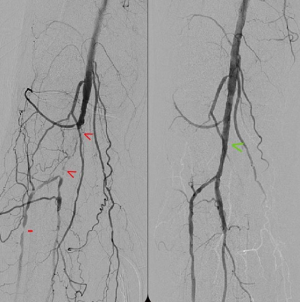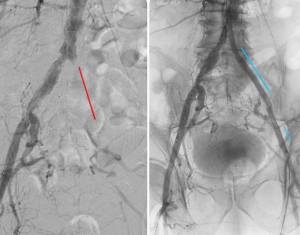Claudication
Claudication is the cramp like pain that develops in the muscles of the leg when walking. The pain is the result of narrowing or blockages of the arteries in the legs. The damage to the arteries is called peripheral arterial disease (‘PAD’).
Why does it occur?
Peripheral arterial disease occurs due to damage of the arteries usually as a result of smoking, high cholesterol, diabetes or high blood pressure. The arteries narrow or block or months and years to reduce the blood supply to the legs. The cramping symptoms are worse on exercising because the narrowed arteries cannot meet the muscles demand for oxygen. When exercise stops the pain usually improves within 5 minutes.
What problems can it cause?
Most people who develop claudication will have symptoms that remain the same for many years. A few patients will improve and some will get worsening of their symptoms (especially if they continue to smoke).
Treatment Options?
Walking and living a healthy lifestyle (exercising, not smoking etc) will help reduce the risk of intermittent claudication.
All patients with claudication should have their cholesterol and blood pressure measured and should be encouraged to stop smoking. It is recommended that all people with claudication should have a variety of medications to protect their arteries form further damage.
Some people will benefit from structured exercise classes to improve how far they can walk. Others may be recommended to have endovascular treatments to improve the circulation:
Balloon Angioplasty
To open a narrowed artery, a catheter with a very small balloon on its tip is placed in the artery and is advanced to reach the narrowed or blocked artery. The doctor then inflates the balloon, pushing aside the plaque that has built up against the vessel walls. The doctor then inflates and deflates the balloon several times to open the vessel.
Atherectomy
Atherectomy is a minimally-invasive method of removing plaque to re-open arteries. Unlike angioplasty and stenting which are designed to squish plaque to the side, atherectomy involves cutting and removing the plaque from the artery, restoring normal blood flow.
Stenting
A stent is a small, metal scaffold that is placed inside an artery. Similar to balloon angioplasty, stents restore blood flow by pushing the plaque to the side but remain inside the artery forever. Stenting often follows balloon angioplasty as an additional treatment to help the vessel remain open.
Bypass
Surgical bypass treats narrowed arteries by directly creating a detour, or bypass, around a section of the artery that is blocked. During a bypass procedure, a physician creates a new pathway for blood flow using a graft. A graft can be a portion of a vein or a synthetic tube that connects above and below a blockage to allow blood to flow around it.
The above information is not all inclusive of the risks, alternatives and benefits. It is not meant to be a substitute for informed discussion between you and your doctor, but can act as a starting point for such a discussion. There are complications possible with any medical procedure. Overall, minimally invasive procedures have a lower complication rate than open surgeries.




